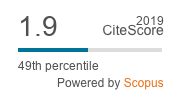Over recent decades urban green areas have been expanded, partly to create more space for nature, but also to counter urban warming and to enhance human wellbeing through access to nature. In parallel, the effects of the risk posed by tick borne disease in rural areas surrounding urbanised areas has been recognised in many regions in Europe. This urban greening, coupled with increasing rural tick and Lyme borreliosis issues may have facilitated, in some areas, circulating urban Lyme borreliosis. One of the main issues with ticks found in urban areas is that communities not previously aware of ticks are now being exposed. This lack of awareness may result in few personal protective measures being practiced, elevated concerns over the risk posed by ticks in urban areas, and heightened alarm raised with local councils. Given that urban areas tend to be intensively managed, this public and professional, including occupational, concern raises questions over all land management actions by local municipalities in urban areas. Whilst some accept that management of ticks in the countryside is a challenge, re-wilding urban areas for wildlife, and inadvertently increasing populations of ticks, may create local concern. Here we describe how environmental and anthropological factors may contribute to the establishment of ticks in urban areas, and discuss preventive strategies for public health management.
Keywords: city, ecology, Lyme borreliosis, prevention, tick, urban green space






